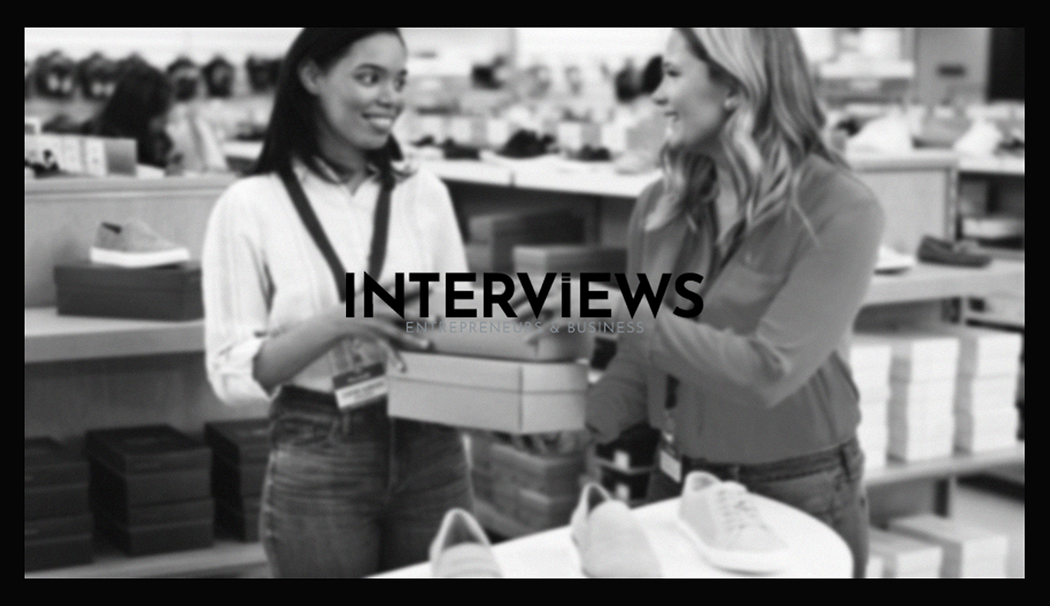Decoding Retail: Is it the Right Path for You? (Spoiler: It’s Complicated)
You are thinking about retail? Maybe you want to be a retail mogul. Or, perhaps you just need a job. Either way, let’s explore retail. It’s not all about mannequins and sale signs. Trust me.
What Exactly IS Retail Anyway? (Beyond Shopping Therapy)
At its core, retail is selling stuff directly to regular folks. Think about buying groceries, clothes, or that gadget you saw online at 3 AM. That’s retail.
This happens in different places. You have classic brick-and-mortar stores with walls. Then there’s the online world. Retail is about selling to consumers, not businesses. That’s wholesaling; retail’s less glamorous but equally important cousin.
Retailers are middlemen. They buy products from manufacturers or wholesalers. Then they sell these in smaller, consumer-friendly portions. Yes, it is to make a profit. Shocking, right?
For dictionary lovers, retail means “the sale of goods in small quantities to final consumers.” They even call it “the industry of such selling.” Fancy.
Why Would Anyone CHOOSE Retail? (Besides the Employee Discount)
Let’s be real. Retail isn’t always glamorous. But it does have perks. First, retail jobs often offer flexible hours. Need to juggle work and life? Retail can help. Plus, sales-focused retail roles pay decently and offer room for growth. Imagine starting at the base of retail, but seeing the top.
If you are looking to enter the working world, retail is a solid option. You will gain real-world skills, especially in customer service. Entry-level jobs? Retail offers many of them. Growth opportunities are there if you hustle. Think of it as training for bigger things.
Cha-Ching! The Cold Hard Cash of Retail Costs
Thinking about opening your own retail store? Hold your horses. It’s going to cost you. We’re talking an average of about $39,210 just to open a retail store. Yes, that’s right. Like the cost of a small car or a down payment on a slightly bigger dream.
Now, that’s just an average. Your costs can vary wildly depending on various factors. Location plays a key role. A prime spot in a trendy area? Get ready for higher rent. Store size matters too – bigger space, bigger bills. Don’t forget furnishing – shelves and racks. And inventory? High-end boutique means higher costs than a dollar store. Lastly, staff pay is also a cost. Who knew?
Retail Superpowers: Skills You’ll Need to Thrive
You are not scared off yet? Good. Let’s discuss skills. Retail is all about people, so you’ve got to be a people person.
Communication is Key. Verbal and written skills matter. You will talk to customers, coworkers, even suppliers. Being clear is essential. No one likes retail riddles.
Customer Service is Important. In retail, customers are key. Great retail employees know communication goes beyond just talking. It involves listening, understanding, and solving problems with a smile.
Attention to Detail Matters. From price tags to displays, little things count. Missed details can lead to lost sales or unhappy customers. Be a retail ninja, spotting mistakes before anyone else.
Product Knowledge is Key. You cannot sell what you don’t know. Understand your products to build trust with customers. Be a product expert, not just a price tag scanner.
Leadership Skills Matter. Even if you’re not the boss, show initiative and take charge when needed. Retail can be chaotic; leadership at all levels is valuable.
Organization Keeps You Sane. Retail can get messy. Keep things organized – inventory, displays, and your workspace – to save stress and boost efficiency.
Resilience is Essential. Retail throws daily curveballs – demanding customers and slow days. Stay positive and roll with the punches. It’s retail-grade mental toughness training.
Responsibility is Key. Owning your tasks and role builds trust. In retail, accountability is crucial, especially with money and customer interactions.
Tech skills matter too. POS Skills are Important. POS (Point of Sale) systems are vital for transactions. Knowing how to use them is essential.
- Using POS Software: More than swiping cards. Navigate the software to handle payments, manage inventory, and access customer info.
- Handling Transactions with Care: Processing sales, collecting data (think loyalty programs), and securely storing info are key parts of POS.
- Customer Service Through POS: The POS system is often the last contact with the customer. Use it to improve their experience – quick checkouts and smooth returns.
The Dark Side of the Storefront: Retail’s Downfalls
Now, let’s address retail’s downsides. Let’s remove the band-aid.
Costly Expenses. We touched on startup costs, but ongoing expenses are high too. Rent, utilities, inventory, marketing, staff wages – it all adds up. Retail can drain money if mismanaged.
Limited Growth Potential. Physical stores have limited reach. Your customers are mainly those who can walk into your store. Expanding means more stores, more costs, and more headaches. Online retail helps, but it’s different.
Staffing Challenges. Finding and keeping good employees is tough. High turnover, constant training, and managing diverse personalities make for a challenge.
Employee Burnout is Real. Retail work can drain you physically and emotionally. Long hours on your feet, demanding customers, pressure to meet sales – it takes a toll. Expectations can be harsh, leading to stress and high turnover. Happy employees? Not always in retail.
Retail Jobs: What Do You Actually DO?
Let’s clarify what retail jobs entail. They sell products directly to customers. Simple.
Retail sales workers are the front-line heroes. They help customers find what they need and process payments. Think “sales clerk,” “retail clerk,” or “salesperson” – all similar roles.
A big part of the job? Handling money. Operating registers or POS systems and managing cash and receipts accurately. Honesty matters here.
Retail Job Family Tree: A Quick Tour
Retail jobs vary. Here’s a quick overview:
- Retail Sales Associates: They help customers, ring up sales, and maintain the store’s appearance.
- Cashiers: Payment processing experts. Speed and accuracy are their superpowers.
- Customer Service Representatives: Problem solvers handling returns, exchanges, and inquiries.
- Visual Merchandisers: Store stylists creating appealing displays to attract customers.
- Buyers:The product scouts deciding what to sell based on trends.
- Trend forecasting meets shopping addiction.
- Inventory Control Specialists: The stock masters. They manage inventory, track shipments, and prevent shortages. Retail logistics nerds.
- Marketing and Advertising Specialists: The hype creators. They promote the store and products through marketing channels. Retail sounds irresistible.
- Team Leaders/Supervisors/Managers: The people in charge. They oversee staff and operations, ensuring smooth function.
- POS Technicians: The tech wizards. They install and maintain POS systems. Keep cash flowing.
Retail World Domination: Industry Overview
The retail industry is massive. It includes companies that sell goods and services. Everything you buy comes from retail in some form.
Store types are diverse. They include:
- Grocery Stores: Food stores. Essential retail.
- Convenience Stores: Quick stops for snacks. Speed is key.
- Discount Stores: Budget shopping. Paradise for value seekers.
- Independent Retailers: Small, local businesses. Unique and community-focused.
- Department Stores: Large stores with multiple departments. One-stop shopping.
- DIY Stores: Tools and materials for home projects. Handy-person heaven.
- Electrical Stores: Gadgets and appliances. Tech treasure troves.
- Specialty Stores: Niche retailers focus on specific products.
And that’s just scratching the surface. Retail is a global giant with many variations.
Retail Secrets Revealed: Key Practices
Want some insider retail tricks? Here are essential practices:
Facing: Also known as blocking, zoning, leveling. This means making shelves look perfect. Pulling products forward and making displays appealing boosts sales.
Recovery: The post-shopping cleanup. After shoppers leave or when it’s slow, store order is restored. Straightening shelves and picking up discarded items keeps the store presentable.
The Retail Holy Trinity: Crucial Factors for Success
In retail, some elements stand out. The top three? Pricing, Location, and Merchandise. Nail these, you’re halfway there.
- Pricing: Too high means no sales. Too low leads to no profit. Finding the sweet spot is crucial.
- Location: Right place with right customers matters. Wrong location means no traffic. Foot traffic is retail’s oxygen.
- Merchandise: Offer what the target audience wants. They’ll buy what they need.
Communication is essential. Retailers rely on a chain of suppliers and distributors. Good communication keeps smooth operations. Retail is a team sport.
Marketing Mayhem: The Retail Marketing Mix
Marketing in retail? A vast universe. The classic “4 Ps of Marketing” matter:
- Product: What are you selling? Is it desirable? Does it meet a need?
- Price: How much is charged? Competitive? Value?
- Place: Where will you sell it? Physical store or online?
- Promotion: How will you market it? Advertising? Sales?
The marketing overachievers use “7 Ps of Marketing.” Here’s what they add:
- People: Your staff and customers matter.
- Process: How do you deliver your product/service? Customer experience is key.
- Physical Evidence: Tangible aspects like store design exist. Visual cues build trust.
Mastering the marketing mix is vital to retail’s success.
Retail Crime: It’s Not Always Petty Theft
Unfortunately, retail faces crime. It’s not just kids stealing candy bars.
Organized Retail Crime (ORC) is a big deal. Groups steal in bulk to resell, often online. It’s costly for retailers. Think professional shoplifting.
Shoplifting is still a major issue. Rates increased in 2023 compared to pre-pandemic levels. Retailers feel the impact.
Retailers prioritize employee and customer safety. Merchandise can be replaced, people can’t. Safety first is the mantra.
A notorious spot for shoplifting? A Walgreens in San Francisco. It ranks as one of the most shoplifted stores in the US.
Common targets for theft include:
- Convenience Stores: Easy targets for quick thefts.
- Supermarkets: High volume with products to blend into.
- Jewelry Stores: High-value items attract thieves.
- Liquor Stores: Alcohol is often stolen.
- Gas Stations: Targeted for quick grabs.
Retail crime is significant, with financial and safety implications.
Show Me the Money: Retail Pay and Earnings
Let’s discuss paychecks. Retail wages vary widely by location and role.
In South Africa, the average retail salary is around R 240,000 per year. Note that averages can be misleading.
Top-tier roles can pay well, up to $187,500 per year. These roles are usually management positions.
Hourly pay examples from a 2023 UK report include:
- Currys – £10.35
- Morrisons – £10.20
- M&S – £10.20
- Asda – £11.11
- Ikea – £10.10
- Lidl – £10.10
- Co-op – £9.90
- Iceland – £9.00
These examples offer a general sense of hourly wages in major UK retailers.
Profit margins in retail? Surprisingly thin. Stores operate with average profit margins of about 3%. Every penny matters.
Retail Roadblocks: Challenges to Overcome
Retail isn’t always smooth sailing. Challenges are common.
Weaknesses include:
- Limited Online Presence: No online presence risks failure. Businesses must go online.
- High Employee Turnover: Keeping staff satisfied is a constant challenge.
- Inadequate Inventory Management: Balancing stock is vital. Too much stock wastes money, too little loses sales.
The biggest killer? Lack of experience and poor management. Incompetent leadership causes failures. Strong leadership is crucial for survival.
Retail Revolution: Modern Trends
Retail constantly evolves. A key trend? Self-service. Self-checkout kiosks and online orders create convenience and speed for customers.
Retail Rabbit Hole: Additional Things to Know
A quirky retail fact: Slotting fees. Also known as “slotting allowances.” These are fees manufacturers pay retailers to put products on shelves. Shelf space isn’t free; it’s rented.
This concludes the tour of the retail world. Is it for you? It’s a mix of opportunity, challenge, and customer interaction. Enter with your eyes wide open.





